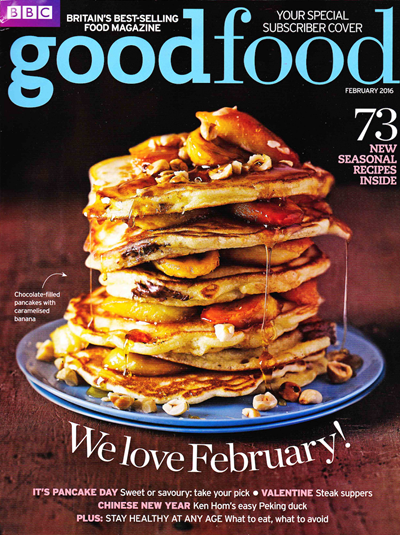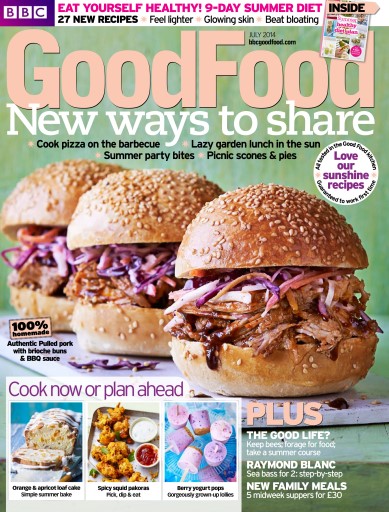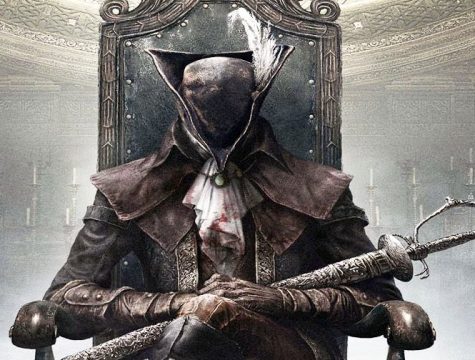Food Photography Research
Goodfood Magazine: Drinks
Choc-orange hot chocolate

- This photo image shows off a close up and focused shot of the Choc-orangne hot chocolate.
- The composition helps draw a focal point in the centre of this photo.
- The light source shining on the cup helps add a 3-dimentional depth to the photo. It also creates a reflection on the hot chocolate’s surface.
- The brightness has been lowered down to create a darker mood. While the lemon trimming contrasts from everything else in the photo.
Raspberry & Passionfruit Martini

- An overhead shot of a couple of martinis.
- This photo cleverly shows, is the ‘Rule of Even’ and ‘Leading the Eye’ Technique.
- The martinis are more detailed because the camera was focused more on the foreground rather that the background.
Spiced Apple Syrup with Clementine and Cloves

- This photo’s gives off a warm and festive feeling because of the colourful Christmas themed setting.
- The images in this photo have been shot in the ‘Rule of Thirds’ composition.
- The room’s lighting helps brighten up the colours of the drinks and everything else in the area. It also help present a positive theme to the image too.
Main Meals
Beef Wellington from GoodFood

- The cover photo to this GoodFood magazine shows a focal, overhead shot of the beef wellington.
- The composition of the framing and the focal point to this image is really well executed.
- The magazine’s cover would be perfect for the Christmas season.
- The cover has a great use with it’s contrasting colours.
- It’s great for giving an appetising look to the beef wellington because of the light source reflecting onto it.
Penne Arrabiata from Jamie Oliver

- Good use of framing and focal point techniques to show how appetising the pasta looks.
- Bright complementary colours and lighting help make pasta visually appealing.
- Could draw in an audience who are wanting to try Italian food.
Insanity Burger from Jamie Oliver’s Comfort food

- The composition of burger clearly shows that it is the main drawing point to this photo portrait.
- Great use of the lighting, helps add more depth to the image.
- The lack of shadows help add brightly coloured and appealing look to the burger itself.
Asian/Indian Meal
Gordon Ramsey: Crispy duck with watercress, chilli and ginger

- The framing and composition of this food portrait has been visually well presented.
- Looks appetising for people who are interested in trying asian food.
- The bright lighting helps bring out the vibrant colours of the meal.
Gordon Ramsey food: Butter Chicken
- The butter chicken curry has been presented to look visually appetising for people who like Indian food.
- The focal point helps draw the viewers eye to the image.
- The bright light source helps add shining effect onto the curry sauce.
- The meal itself stands out from the background because of its contrasting colours.
Bakwan Kepiting

- This wouldn’t look visually appealing for people who aren’t interested in asian soups/dishes. This is because of photo’s dark and dim lighting.
- The photo presents itself with the foreground’s image being the main focal point.
Food Magazine Covers

- A focused compositional shot of a stack of pancakes.
- Light source reflection on the right side help add more depth to the pancakes.
- The cover also includes facts about the pancake’s ingredients and recipes.
- A pancake day themed cover setting.

- The cover showing the Pulled Pork buns uses the Rule of Thirds composition.
- Bullet-pointed facts about summer themed food and recipes.
- Healthy food advice inside mentioned on the top part of the cover.
- 3 smaller images each showing an appetising image of meals and deserts.
- BBC logo at the top right of the magazine.
Food Photography Planning
We all had to write down notes about how we will develop and produce our food photo portraits for this term’s project. The research work will benefit as an example of how our work should look as an end result.
Sketchbook Plans
Plan 1

- The top sketch shows the equipment we will be using for this project.
- It is Important to not plug in this camera set-up to the mains.
- The bottom sketch shows one example of how we could present our food photo portraits.
- The bullet-points shows how we could experiment the camera’s settings and how to present the composition of our photos.
Set-up Plan

This example sketch and bullet-points shows how our group will set up the media room’s equipment and set pieces.
Plan 2: Food

These food choices will be the subject matter of my groups food portrait project.
Food Photography: Finale Outcome
The final process of our food photography project took place in the media studio. We had to take as many photos of the variations of food that we brought in for our latest project. Each of these photos have to be shot in different compositions along with lighting techniques.
Media Studio Set-Up

- The table stand was the main set piece stand for our food to be positioned on.
- We had to cover up the stand with a sheet to avoid damage and food stains.
- Two Bowen lights were positioned on both sides of table stand.
- The camera attached to the tripod stand was placed down in front of the stand.
Lighting Set-Up
- We had to make sure that the Bowen lights were in correct position, by testing it to see if there was enough light source reflecting off the object.
- Then we tested out the Bowen light’s settings to see if the flash is too strong or weak for the photos.
- Once everything was ready, we began taking photos of the food we brought in.
Food Portrait Photos
These final outcome to these photos will each have their own different compositions and lighting techniques.
Duck Wraps
Most of these duck wrap portrait photos have been shot in a focused composition which helps draw the eye to the image. The light source on the right of the wraps creates more shadows, which helps add more depth to the image.
Bottle of Liqueor/Disaronno
These photos of Disaronno were mainly each presented in a focused composition, but lighting technique was done differently. We pulled off this effect by having a person on each side of the Bowen lights and then covered the lens with a coloured translucent piece. We covered the right lens with a blue piece, then the left lens with an orange piece. Each photo shows different strengths of lighting while preforming this technique.
Fruit Scones
Each of these photos have been taken in their own different compositions, but every one of them use the Rule of Odd technique. This is because of the 3 scones being presented on top of the platter. The weak lighting in these photos helps add a more appetising gold colour to the scones.
Food Photography Evaluation
- I have been asked to do research, planning and produce photo portraits for food photography.
- The media studio was the chosen location for my groups project. We used the studio’s equipment to help us produce high quality photos.
- The online research on food photography did give me a clear idea of how I should present my photo portraits. It also gave more ideas of what food I wanted use for this photography project.
- I presented each of my food photos with different compositions and lighting techniques.
- We got some feedback from our older photos, which influenced us to produce more photos with improved the composition and lighting effects.
- I though my group got on really well throughout this project. We managed to produce enough photos as evidence for this project on our blog.
- I would of brought in more types of food to add more varied results to this project.




